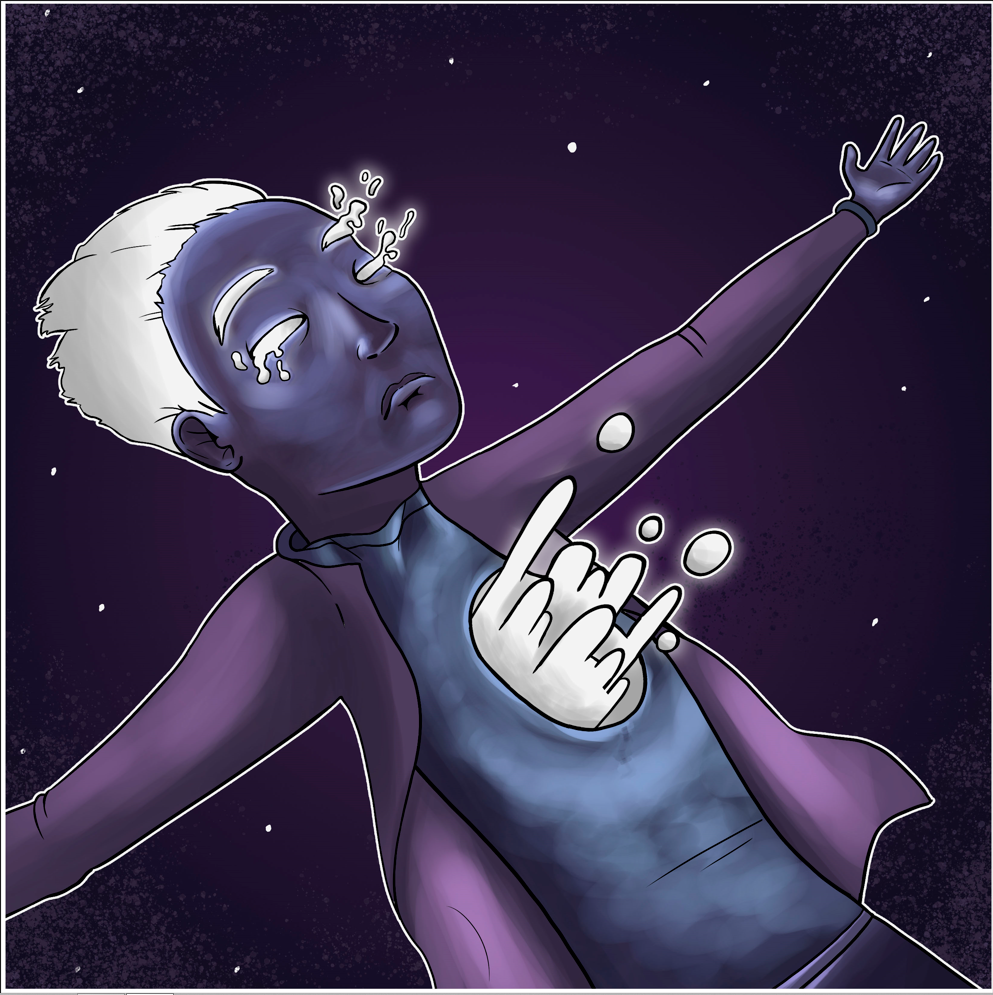Introduction
Digital art is becoming increasingly prevalent in the creative field today. Most artists see the media as digital and done on a computer. This kind of art is becoming more accessible as the instruments and software needed for it are more widespread. Digital art is defined as “art made using software, computers, or other electronic devices” (“What is digital art,” 2021, para. 3). Even though the works are done on a computer, fundamental principles of art are still followed and can be observed in such artworks. However, digital art is quite different from traditional forms due to being artificial and not giving a sense of authenticity.
Comparing Digital and Traditional Techniques

I chose the digital piece by Assylzhan Omarov (Figure 1) to compare it to the traditional artworks’ techniques and assess its strengths and weaknesses. The first thing that strikes the eye is the white borderline framing the character illustrated in this painting. Usually, digital artists make such borderlines to emphasize the silhouette of the main subject of the artwork. A digital workspace can be done automatically by using a specific software function. Meanwhile, traditional artists do not do this kind of procedure or blend it to show the brightness emanating from the subject.
Another feature that can be noticed is the shadows and brushes used in this piece: brush strokes imitate the real painting on the canvas. This is done to mimic the impression of a real painting on canvas, the computer painting’s brushstrokes replicating the texture and application of paint on a tangible surface. This method shows how digital artists can imitate conventional painting styles and processes, producing a visual effect that closely resembles the characteristics of traditional artworks.
Strengths
The adaptability and flexibility of digital art are some of its most prominent benefits. Digital tools make it easy for artists to experiment, adjust, and explore various artistic trajectories. In contrast to traditional art mediums, digital art enables color, composition, and general design changes at any point during the creative process (Bishop, 2018). Through this freedom, artists can improve their work and produce desired results more effectively.
In terms of the analyzed artwork, I find strong composition, well-done contrast of chosen colors, and light-shadow work to be the major strengths of the piece. The contrasting clean black-and-white borderlines make the artwork look particularly appealing.
Weaknesses
However, its drawback is the absence of definite physicality in digital art. The paint’s texture, the canvas’s weight, and other physical characteristics of traditional artworks appeal to the viewers’ tactile senses (Bishop, 2018). While digital art can mimic specific aesthetic characteristics, it cannot wholly replicate the tactile sensation of handling a real-world piece of art. This factor can reduce the emotional and sensory engagement viewers can have with digital works.
As for this piece, I consider the lack of material texture similar to real paintings to be its weakness. Other disadvantages are the lack of detail and the simplicity of the background.
Conclusion
In conclusion, digital art is becoming more common in today’s creative environment. Digital artworks follow the basic rules of art, even though they may use different techniques and characteristics from those employed by traditional artworks. The digital artwork by Assylzhan Omarov that was selected for this journal entry demonstrates the artist’s talent for using digital tools to produce a visually appealing and interesting artwork.
Digital art’s flexibility and adaptability give creators a unique chance to explore and experiment. The works, however, might not provide the same tactile sensation as traditional artworks do, which might limit the viewers’ sensory and emotional response. Overall, digital art has its advantages and disadvantages, adding to the artistic field’s variety and evolution.
References
Bishop, C. (2018). Against digital art history. International Journal for Digital Art History, (3), 124-131. Web.
Omarov, A. (2020). Soul [Artwork]. Behance. Web.
What is digital art. (2021). Eden Gallery. Web.